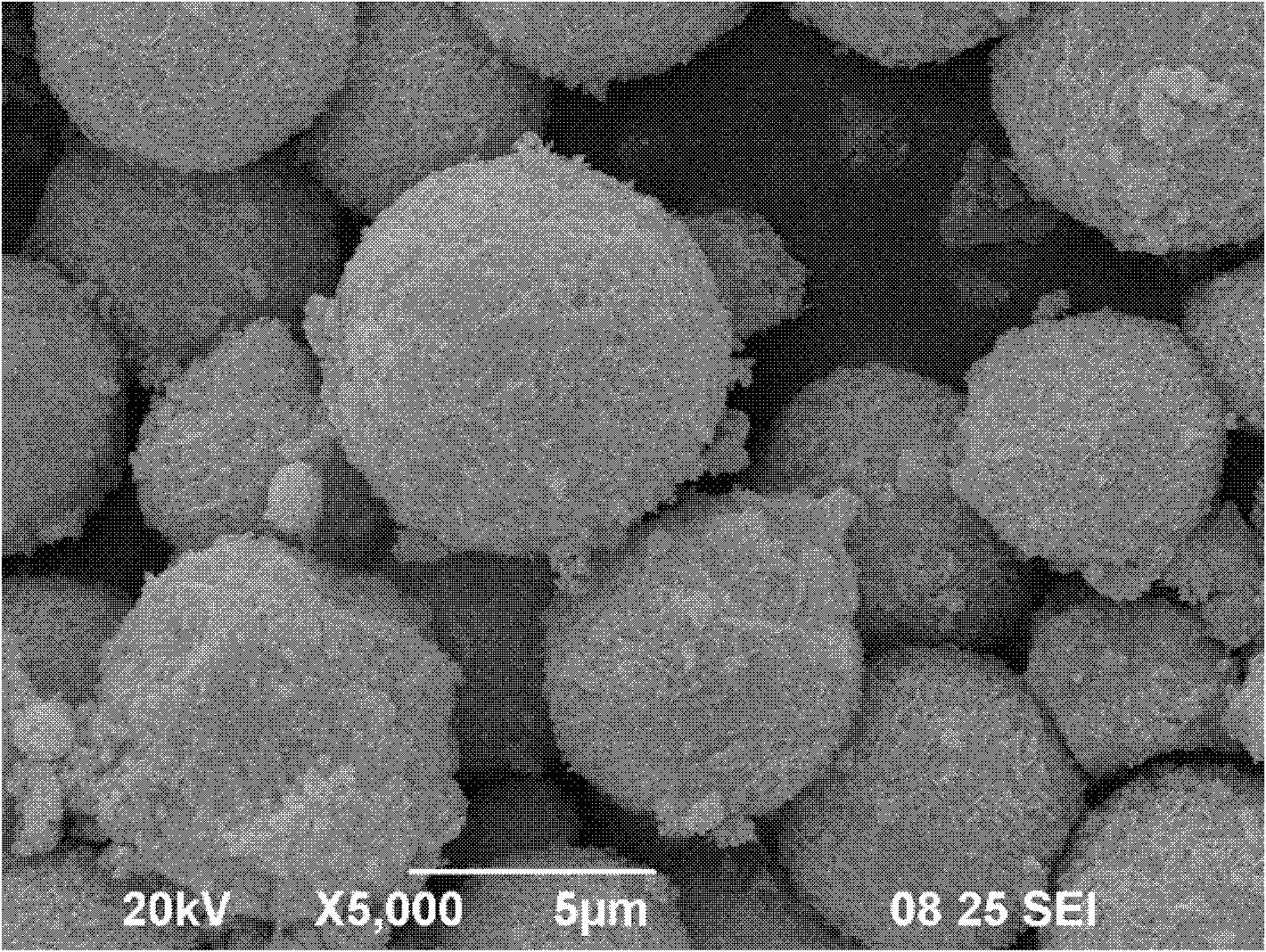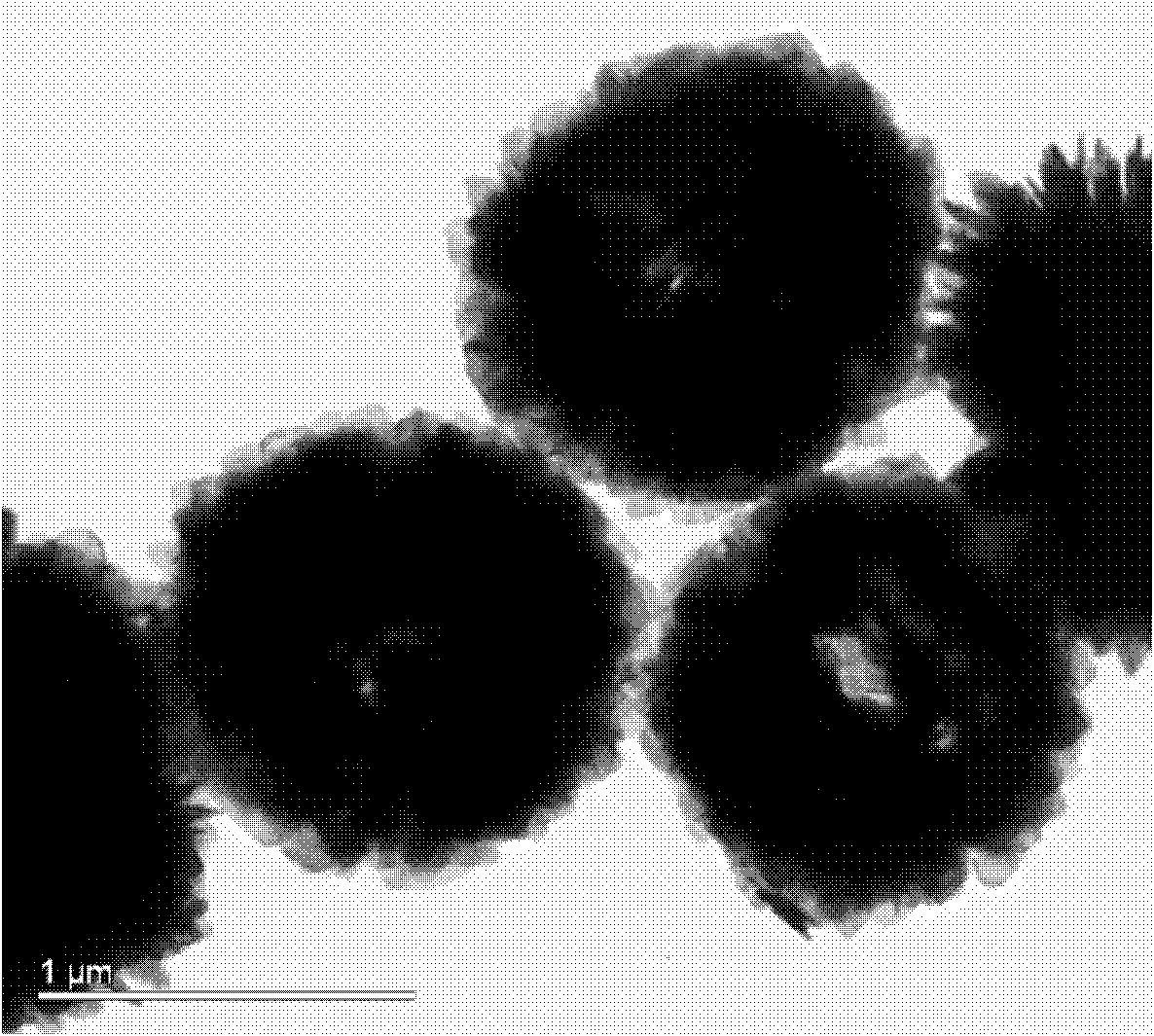Bismuth subcarbonate photocatalyst and preparation method thereof
A photocatalyst, bismuth oxycarbonate technology, applied in the field of photocatalysis, can solve the problems of high electron-hole pair recombination rate, low crystallinity of bismuth oxycarbonate, uncontrollable form of bismuth oxycarbonate, etc. The effect of improving photocatalytic performance and inhibiting recombination
- Summary
- Abstract
- Description
- Claims
- Application Information
AI Technical Summary
Problems solved by technology
Method used
Image
Examples
preparation example Construction
[0036] The invention provides a kind of preparation method of bismuth oxycarbonate photocatalyst, comprises the following steps:
[0037] A bismuth source and a soluble carbonate are subjected to a hydrothermal reaction in an aqueous solution to obtain a bismuth oxycarbonate photocatalyst;
[0038] The bismuth source is bismuth citrate or bismuth ammonia citrate.
[0039] In the present invention, a bismuth source and a soluble carbonate are first dissolved in water to obtain a mixed solution; the bismuth source is bismuth citrate or bismuth ammonium citrate. In the present invention, the aqueous solution of soluble carbonate is preferably firstly prepared, and then a bismuth source is added to the aqueous solution of soluble carbonate to obtain a mixed solution. In the present invention, the soluble carbonate is preferably sodium carbonate, sodium bicarbonate, potassium carbonate or potassium bicarbonate, more preferably sodium carbonate or potassium bicarbonate; the water is ...
Embodiment 1
[0052] 0.23g sodium carbonate was dissolved in 75mL deionized water to obtain a sodium carbonate solution with a mass concentration of 0.3%, to which 1.6g bismuth citrate was added, and after stirring for 30 minutes, the resulting mixed solution was moved into a 100mL hydrothermal kettle, The reaction was carried out at 180° C. for 24 hours. After the reaction, the reaction product was taken out, centrifuged, filtered, washed twice with water and washed with ethanol twice, and then dried at 80° C. to obtain a bismuth oxycarbonate photocatalyst.
[0053] The present invention carries out XRD analysis to the bismuth oxycarbonate photocatalyst that obtains, and the result shows, the bismuth oxycarbonate photocatalyst that present embodiment prepares has stable and complete (BiO) 2 CO 3 Crystal structure; the present invention carries out SEM scanning analysis to the bismuth oxycarbonate photocatalyst that obtains, and the result is as follows figure 1 as shown, figure 1 For th...
Embodiment 2
[0056] 0.46g sodium carbonate is dissolved in 75mL deionized water, obtains the sodium carbonate solution that mass concentration is 0.61%, adds 1.6g bismuth citrate wherein, after stirring for 30 minutes, the mixed solution obtained is moved in the 100mL hydrothermal kettle, in React at 180°C for 24 hours. After the reaction, the reaction product was centrifuged, filtered, washed with water and ethanol twice, and then dried at 80° C. to obtain a bismuth oxycarbonate photocatalyst.
[0057] The present invention carries out X-ray diffraction analysis to the bismuth oxycarbonate photocatalyst that obtains, and the result shows, the bismuth oxycarbonate catalyst that present embodiment prepares has stable and complete (BiO) 2 CO 3 Crystal structure; The present invention carries out TEM scanning analysis to the bismuth oxycarbonate photocatalyst that obtains, and the result is as follows figure 2 as shown, figure 2 For the TEM image of the bismuth oxycarbonate photocatalyst...
PUM
| Property | Measurement | Unit |
|---|---|---|
| thickness | aaaaa | aaaaa |
| diameter | aaaaa | aaaaa |
| diameter | aaaaa | aaaaa |
Abstract
Description
Claims
Application Information
 Login to View More
Login to View More - R&D
- Intellectual Property
- Life Sciences
- Materials
- Tech Scout
- Unparalleled Data Quality
- Higher Quality Content
- 60% Fewer Hallucinations
Browse by: Latest US Patents, China's latest patents, Technical Efficacy Thesaurus, Application Domain, Technology Topic, Popular Technical Reports.
© 2025 PatSnap. All rights reserved.Legal|Privacy policy|Modern Slavery Act Transparency Statement|Sitemap|About US| Contact US: help@patsnap.com



